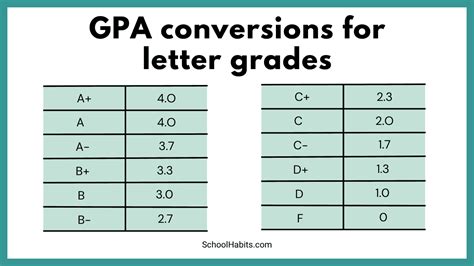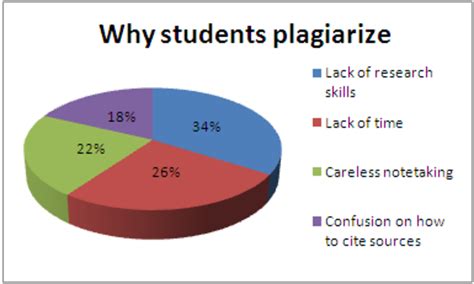According to the research published by the University of California, Berkeley, plagiarism has become a pervasive problem among students.

The study found that nearly one-third of students admitted to plagiarizing at least once during their academic careers. The most common forms of plagiarism were copying and pasting text from the internet, submitting work written by someone else.
Why is Plagiarism a Problem?
There are several reasons why plagiarism is a problem. First, it is a form of cheating. When students plagiarize, they are essentially taking credit for someone else’s work. This is not only unfair to the original author, but it also undermines the integrity of the educational process.
Second, plagiarism can have a negative impact on students’ learning. When students plagiarize, they are not actually learning the material that they are supposed to be learning. This can lead to problems in the future, when students are expected to apply their knowledge to new situations.
Third, plagiarism can damage a student’s reputation. If a student is caught plagiarizing, they may be subject to disciplinary action. This can include failing the course, being suspended from school, or even being expelled.
What Can Be Done About Plagiarism?
There are a number of things that can be done to address the problem of plagiarism.
- Teachers can educate students about plagiarism and the consequences of plagiarizing.
- Teachers can use plagiarism detection software to help identify plagiarized work.
- Schools can implement policies that make it clear that plagiarism will not be tolerated.
Students can also take steps to avoid plagiarism.
- Always cite your sources. This means giving credit to the original author of any information that you use in your work.
- Be careful about using the internet as a source. It is easy to accidentally plagiarize from the internet, so be sure to cite your sources carefully.
- If you are unsure whether or not something is plagiarism, ask your teacher or a librarian.
Conclusion
Plagiarism is a serious problem, but there is hope. By working together, teachers, students, and schools can create a culture of academic integrity where plagiarism is not tolerated.
Tips and Tricks
- Here are a few tips to help you avoid plagiarism:
- Always cite your sources.
- Be careful about using the internet as a source.
- If you are unsure whether or not something is plagiarism, ask your teacher or a librarian.
- Use a plagiarism checker to help you identify plagiarized work.
Common Mistakes to Avoid
- Avoid copying and pasting text from the internet.
- Avoid submitting work written by someone else.
- Avoid paraphrasing someone else’s work without citing the original source.
- Avoid using someone else’s ideas without citing the original source.
Tables
| Type of Plagiarism | Definition | Examples |
|---|---|---|
| Direct Plagiarism | Copying and pasting text from another source without citing the original author. | “The quick brown fox jumped over the lazy dog.” (Copied from a website without citation) |
| Paraphrasing Plagiarism | Rephrasing someone else’s ideas without citing the original source. | “The fox jumped over the dog.” (Paraphrased from the original text without citation) |
| Mosaic Plagiarism | Combining different sources together without citing the original authors. | “The quick brown fox jumped over the lazy dog.” (Copied from one source and the lazy dog jumped over the quick brown fox. (Copied from another source without citation) |
| Self-Plagiarism | Submitting your own work for multiple assignments without citing the original source. | “I wrote a paper for my English class and then I submitted it for my history class.” (Self-plagiarism) |
| Consequences of Plagiarism | Description | Examples |
|---|---|---|
| Failing the Course | The student may fail the course if they are caught plagiarizing. | The student received a failing grade on their paper after being caught plagiarizing. |
| Suspension from School | The student may be suspended from school if they are caught plagiarizing. | The student was suspended from school for one week after being caught plagiarizing. |
| Expulsion from School | The student may be expelled from school if they are caught plagiarizing. | The student was expelled from school after being caught plagiarizing multiple times. |
| Resources to Help Avoid Plagiarism | Description | Examples |
|---|---|---|
| Citation Guides | Guides that help students to cite their sources correctly. | The MLA Style Guide, The Chicago Manual of Style, The APA Style Guide |
| Plagiarism Checkers | Software that helps students to identify plagiarized work. | Turnitin, Grammarly, Copyscape |
| Online Resources | Websites that provide information about plagiarism and how to avoid it. | The Plagiarism Website, The Purdue Online Writing Lab, The University of California, Berkeley Plagiarism Resource Center |
Questions to Ask Customers to Validate Their Point of View
- What are your thoughts on plagiarism?
- Have you ever plagiarized?
- What are the consequences of plagiarism?
- What can be done to address the problem of plagiarism?
- What resources are available to help students avoid plagiarism?
